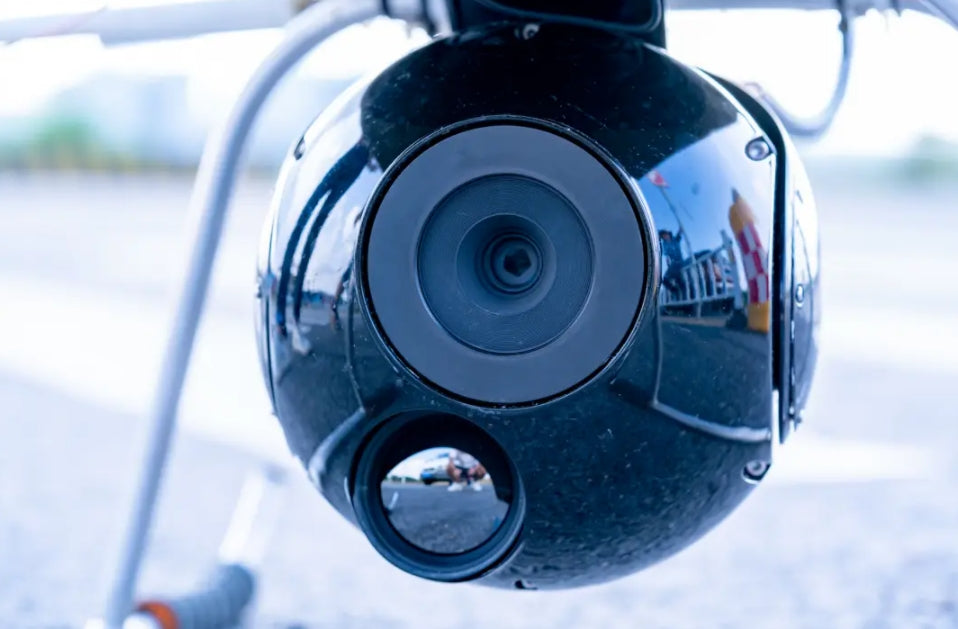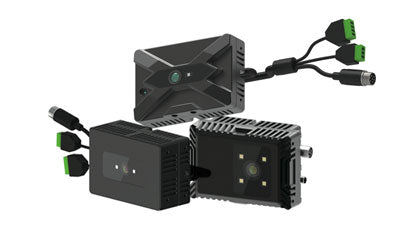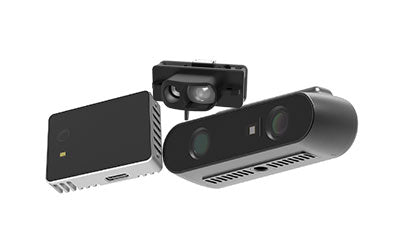Understanding TOF Camera Tech : How Time of Flight Enables Accuracy

Today’s rapidly advancing world of smart technology, 3D perception has become a core requirement across numerous industries. TOF (Time-of-Flight) cameras play a pivotal role in this domain. By measuring the time it takes for a light signal to travel to a surface and reflect back, these cameras capture precise depth information. They are widely used in fields like robotics vision, facial recognition on smartphones, obstacle avoidance in drones, and industrial automation. This article provides a deep dive into the working principles, key technologies, components, and typical applications of TOF cameras to give you a comprehensive understanding of this emerging 3D imaging technology.
What is a TOF Camera?
A TOF camera is a 3D imaging device that calculates the distance to a target by measuring the time light takes to travel from the source to the object and back. Unlike traditional 2D image acquisition, a TOF camera captures depth data for each pixel simultaneously, generating a full 3D image. Originating from LiDAR and time-of-flight distance measurement systems, TOF cameras have evolved into compact, low-power, high-precision modules widely integrated into smart and industrial devices.
What is the formula for time of flight?
TOF (Time of Flight) determines the distance between an object and a sensor by measuring the travel time of light or other signals. The basic formula is:
Distance = (Time of Flight × Speed of Light) ÷ 2
Explanation:
-
Time of Flight: The total time it takes for a signal to travel from the emitter, reflect off the target, and return to the receiver.
-
Speed of Light (c): Approximately 3 × 10⁸ m/s in a vacuum; slightly less in air but usually approximated as the speed of light.
-
Divided by 2: Since the time measured includes the journey to the object and back, we divide by 2 to get the one-way distance.
This principle allows precise distance calculation using the time delay and the constant speed of light.
Basic Principle of TOF Distance Measurement
At the core of TOF camera operation is the principle of time-of-flight ranging. A TOF camera emits a modulated infrared laser or LED light toward the object. When this light reflects off the surface, it returns to the camera’s receiver. The time between emission and reception is recorded. Using the formula (Distance = Speed of Light × Time ÷ 2), the precise distance to the object is calculated. This process happens within nanoseconds, enabling highly real-time and accurate measurement.
Unlike traditional structured light or stereo vision systems, TOF does not rely on ambient texture or lighting. It performs reliably even under complex lighting, making it ideal for low-light or outdoor applications. Its high frame rate and full-scene depth capture give it a unique advantage in dynamic object tracking.
Key Components of a TOF Camera
A complete TOF camera system typically includes:
-
TOF Emitter: Usually a VCSEL (Vertical Cavity Surface Emitting Laser) or LED that emits modulated infrared light.
-
High-Sensitivity Receiver: Captures the reflected light signal and converts the time difference into an electrical signal.
-
Depth Processing Engine: Computes the time difference for each pixel to generate a high-quality depth map.
-
TOF Camera Module: Integrates all components into a compact unit for easy integration into smartphones, robots, drones, vehicles, etc.
Advantages and Features of TOF Technology
TOF cameras offer several advantages thanks to their unique time-of-flight measurement principle:
-
High Accuracy: Typically at millimeter-level precision, TOF enables accurate and real-time localization of objects—even in motion—without significant blur or delay. This is essential in fields requiring precision like autonomous driving, robotics, and industrial inspection.
-
Real-Time Performance: Each pixel collects depth data simultaneously, avoiding the delays of point-by-point scanning. High frame rates make TOF ideal for real-time scenarios like drone obstacle avoidance, gesture recognition, and behavior analysis.
-
Compact and Low-Power: TOF modules are compact and energy-efficient, suitable for embedding into portable or miniaturized devices such as smartphones, AR/VR headsets, and service robots.
-
Fast Response Time: Depth calculation is completed in just a few nanoseconds, enabling rapid decisions in smart systems.
-
Strong Environmental Adaptability: Unlike stereo vision or structured light, TOF performs well in low-light, dark, or high-glare environments. This makes it ideal for outdoor, night-time, or backlit conditions.
-
AI Integration: With the fusion of AI, TOF systems can output 3D point clouds, perform object recognition, human posture analysis, and spatial reconstruction—broadening the scope of intelligent vision applications.
Typical Application Scenarios for TOF Cameras
As TOF technology continues to mature and costs decrease, its applications are expanding rapidly across sectors:
1. Smartphones & Consumer Electronics
TOF sensors are widely deployed in high-end smartphones for advanced 3D facial recognition, portrait background blur, and AR filters. They offer more secure and interactive experiences compared to traditional 2D methods. TOF modules also power spatial tracking, gesture recognition, and environment sensing in AR/VR devices.
2. Robotics & Autonomous Vehicles
TOF depth cameras serve as the core sensing modules for robots and autonomous systems. They support 3D mapping, obstacle avoidance, path planning, and target detection in mobile robots, drones, and autonomous vehicles. Their high frame rates and wide field of view make them ideal for high-speed, real-time perception.
3. Industrial Automation & Inspection
In manufacturing, TOF cameras enable non-contact 3D measurements for object volume, positioning, thickness, and contour inspection. Applications include dimension detection, packaging sorting, and robotic guidance. Compared to laser scanning or structured light, TOF offers better speed and environmental adaptability, improving production efficiency and quality control.
4. Healthcare & Medical Technology
TOF cameras are increasingly used in surgical navigation, rehabilitation monitoring, and posture analysis. Real-time depth sensing offers intuitive 3D visualizations for doctors, improving precision and safety. For example, TOF-based imaging systems, integrated with AI, allow contactless monitoring of patient breathing.
5. Smart Retail, Security & Smart Home
TOF technology is widely adopted in people counting, access control, and smart lighting. By accurately tracking human movement and spatial depth, TOF cameras enhance efficiency in behavioral analysis and interactive environments in smart stores, surveillance, and home automation systems.
Leading TOF Camera Products & Trends
Many companies—including Synexens, PMD, Sony, and STMicroelectronics—have launched advanced TOF camera modules supporting long-range measurement, high-resolution point clouds, and robust environmental performance.
With the growing fusion of AI and TOF, future systems will go beyond distance measurement to support intelligent analysis like object recognition and scene understanding. Moreover, multi-TOF camera synchronization is enabling high-precision 3D reconstruction and modeling applications.
Conclusion: TOF Technology Empowering the Future of Perception
TOF cameras are rapidly becoming core components in smart sensing systems due to their high precision, real-time performance, and adaptability. By leveraging the principle of time-of-flight, TOF enables machines to “see and understand” the world—fueling breakthroughs in automation, human-machine interaction, and intelligent control. As costs continue to fall and algorithms improve, TOF is poised to become a standard feature in future smart devices, ushering in a new era of 3D perception.
Synexens Industrial Outdoor 4m TOF Sensor Depth 3D Camera Rangefinder_CS40p
After-sales Support:
Our professional technical team specializing in 3D camera ranging is ready to assist you at any time. Whether you encounter any issues with your TOF camera after purchase or need clarification on TOF technology, feel free to contact us anytime. We are committed to providing high-quality technical after-sales service and user experience, ensuring your peace of mind in both shopping and using our products.





